Eyes are an important means for the expression of emotions, and through their role in sight and looking, one of the central themes in much of visual art. This week I look first at eyes wide open as an expression of surprise and seeing, and tomorrow at eyes in other roles, including a favourite illusion.
The canonical study of eyes in surprise is Rembrandt’s masterpiece Belshazzar’s Feast from about 1635-1638.
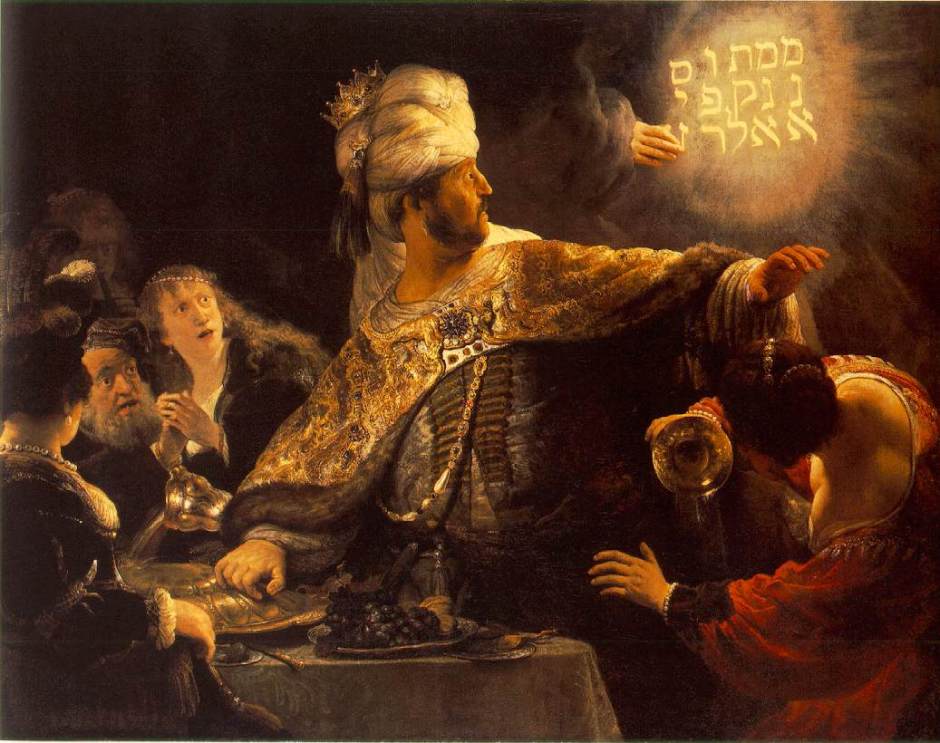
This is one of Rembrandt’s most beautiful paintings, in which he has captured the exquisite detail of the jewels and decorations on Belshazzar, and its rich, golden light shines across the room. But just look at those eyes.

Belshazzar is stood, taken aback to the point where his eye appears to be popping out, as he watches the disembodied hand trace out the foreign letters on the wall behind him. By showing his eye in profile, Rembrandt exaggerates the expression, with so much white sclera exposed above and below the pupil that it appears ready to pop out of its socket.
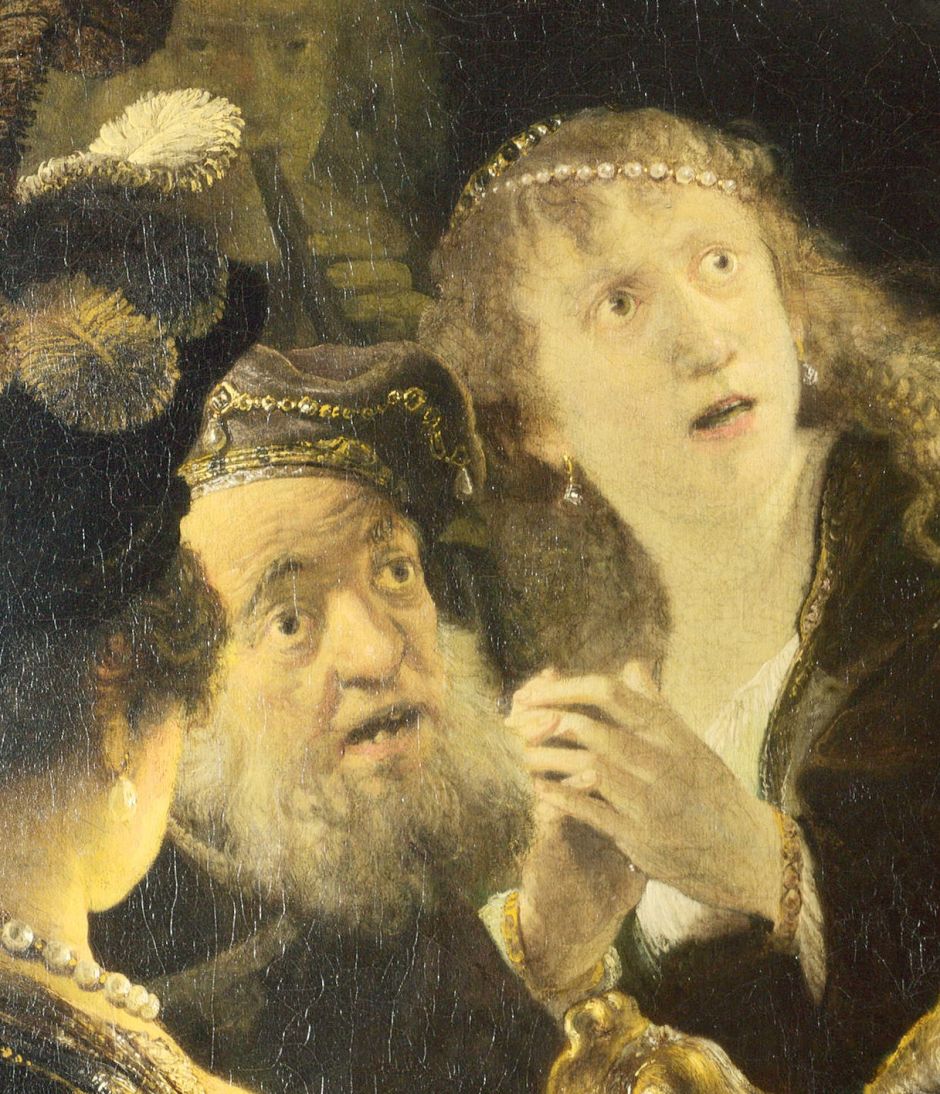
A couple of his guests sat to his right show their astonishment, although not to the same extent as Belshazzar.
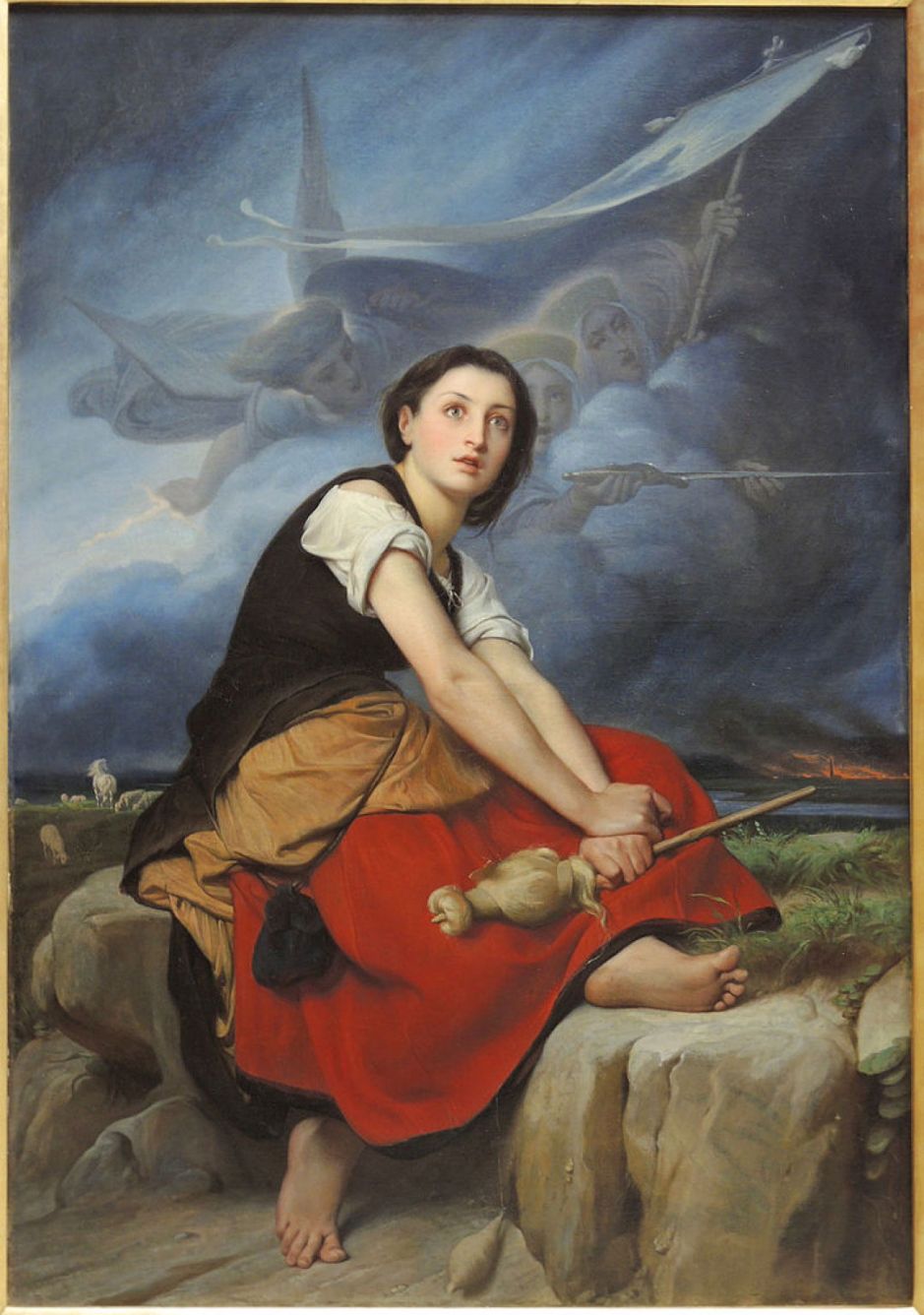
Léon-François Bénouville’s Joan of Arc Hearing Voices, probably painted between 1845 and his early death in 1859, shows her wide-eyed surprise on being called in a mystical experience. Although she’s hearing voices, in visual art this can only be expressed in terms of seeing a vision with her eyes.

Painting The Sense of Sight requires careful attention to the eyes. Annie Louisa Swynnerton, whose depictions of eyes are exceptional, achieves perfection in her masterpiece from 1895.

Swynnerton’s skill with eyes extends even to childhood portraits, such as Illusions from about 1900.

Jean Geoffroy was another of that rare breed of artist who specialised in painting children. His undated painting of It’s Hard to Share shows two young boys in the wild. The eyes of the boy in the centre express his suspicion and reluctance to share the paper cone of sweets he has just bought.
Eyes have also been central in the depiction of one major motif, Medusa the Gorgon.
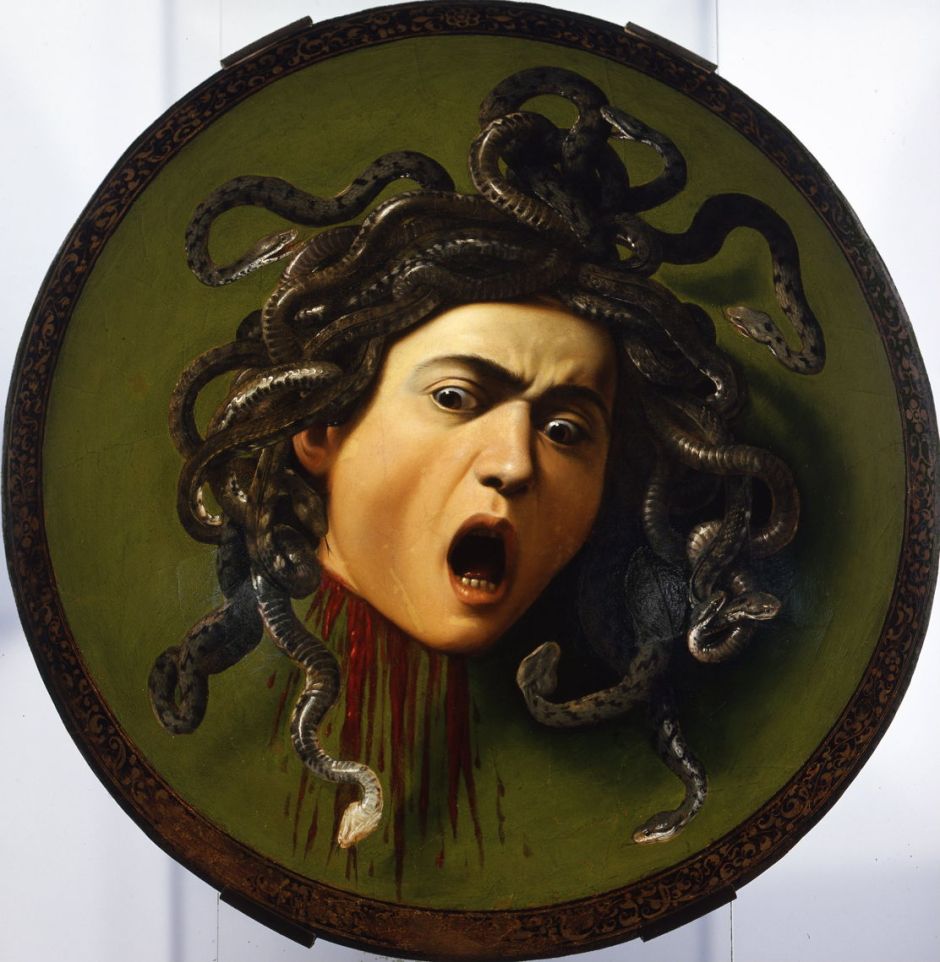
The most famous image of her head must be Caravaggio’s Medusa from about 1597, which is actually his second version. Although her pupils are looking down, her eyes are wide open and her brows knitted in sheer horror.
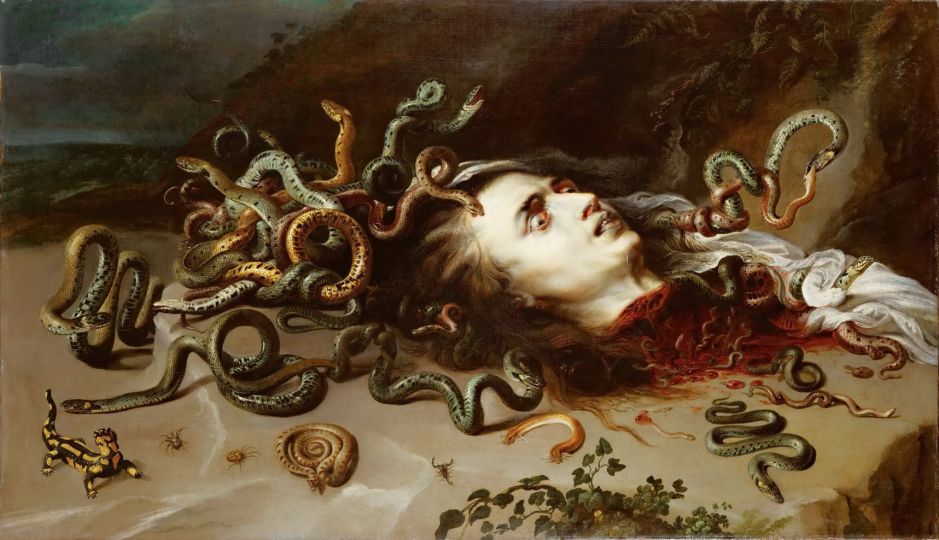
Shortly afterwards, in about 1617, the young and flourishing Peter Paul Rubens painted his remarkable Head of Medusa. This shows her head when Perseus had placed it on a bed of seaweed, after rescuing Andromeda. From within the exuberant mass of snakes her lifeless eyes stare out in the shock of death.
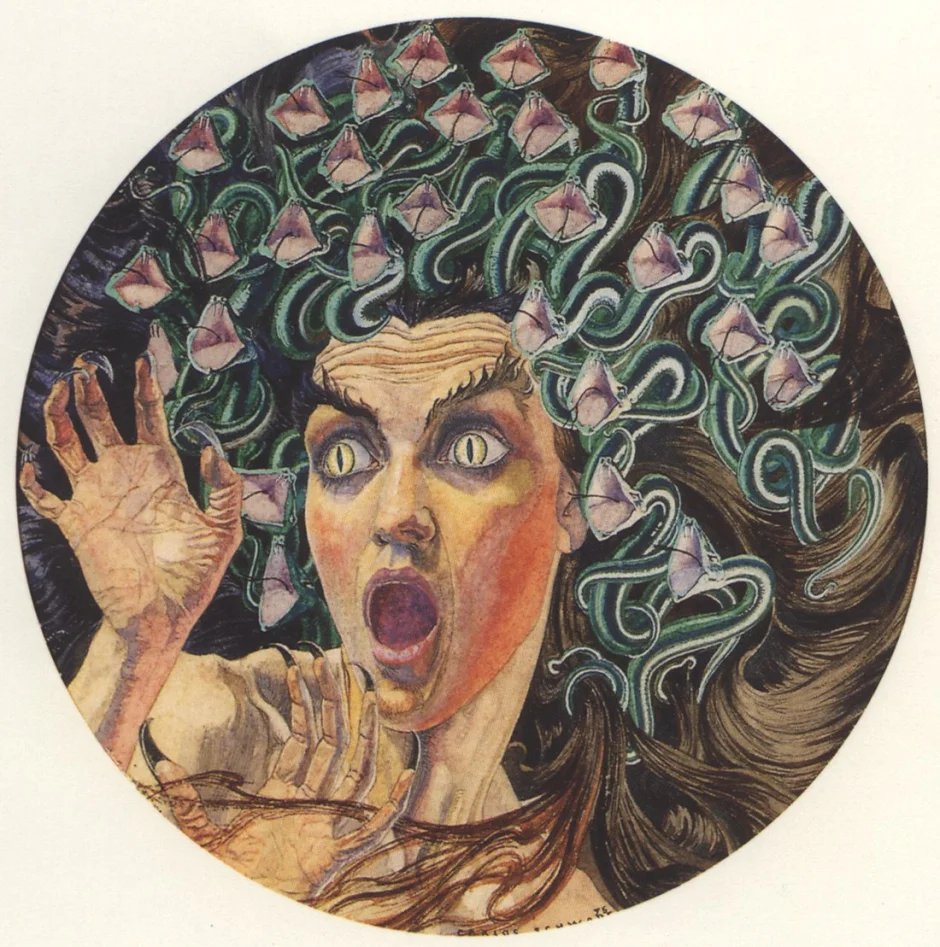
Carlos Schwabe’s watercolour Medusa from 1895 captures her face before decapitation, and gives her hauntingly feline eyes staring wide into her imminent destiny.

